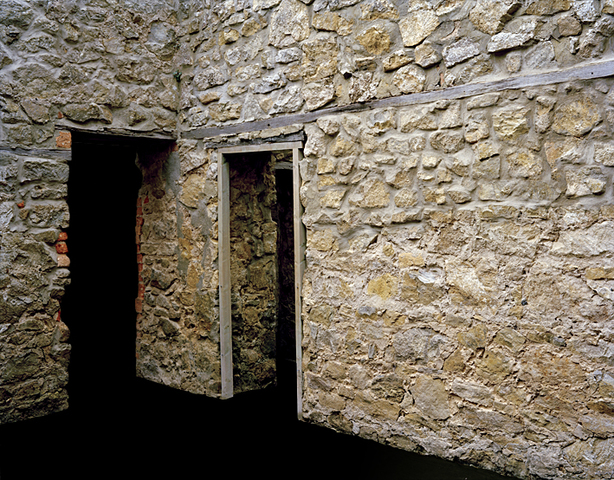La Posa
Klenz, Steffi (2010) La Posa. [Photography]
- Images
- Details
La Posa explores questions of local identity and the importance of home to a continued sense of self, evoking themes of memory and displacement. It focuses on a remote Dorset village, Tyneham, whose inhabitants were moved out by their army landlords during WW2. The promise that they could return after the war was broken, and the village is still used for military training: footpaths are wired off for most of the year.
La Posa's large hand-printed colour photographs present the windows and doors as black spaces. The work extends my exploration of place as a psychological space, by investigating the ability of the colour black to produce a 'non-space' or void. I experimented intensively with photographing the correct blackout material, and researched art-historical representations of 'voidness'. La Posa's blacked-out windows and doors make it impossible for the viewer to metaphorically penetrate any entrances or exits, and refer to the impossibility of entering or existing the space itself. The images also highlight ideas of concealment of information through an intense focus on fragments and details with the use of a large-format camera.
Background research incorporated architectural history, archival documents, and investigating compulsory purchase orders by the Ministry of Defence. La Posa was also informed by Patrick Wright's 1995 book The Village that Died for England. I researched the work of John Kiesler on psychological ephemeral structures, discovering the Shinto complex in Japan. The title of La Posa refers to a faux-anthropological narrative by the sculptor Juan Munoz, in his 1990 publication Segment, which tells of a Peruvian village where every year an ephemeral house is built, only to be destroyed a short time after. La Posa deliberately references this ephemeral building that offers contemplation, rather than habitation.
As a result of La Posa I was awarded the 2010 Renaissance Art Prize.
Actions (login required)
 |
Edit View |
